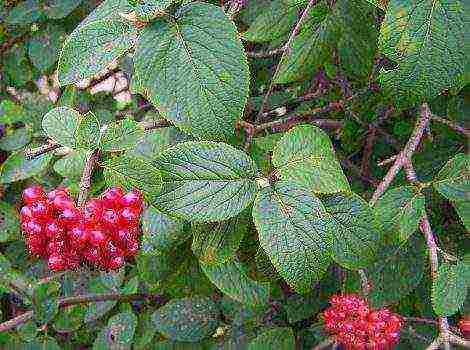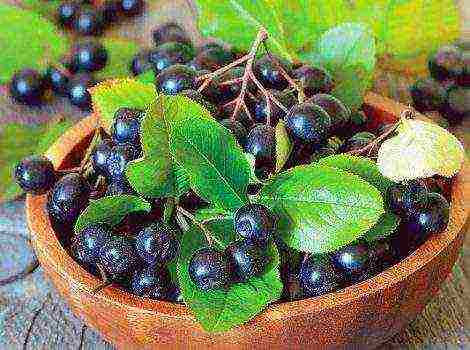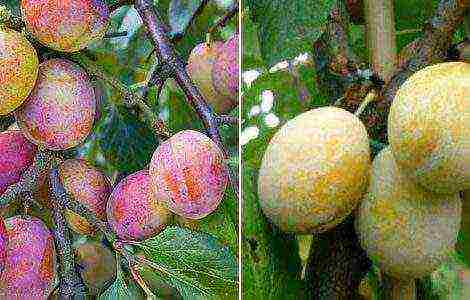Content
Amateur gardeners agree that cherry plum is the same plum. But this opinion is erroneous.
Plum and cherry plum - fruits that differ by nutritional value, taste and other indicators.
Gardeners note the following differences between plum and cherry plum:
- Fruit color... Cherry plum in most cases is presented in yellow-red color, and plum in dark blue.
- Differ chemical composition and nutritional value. Plums contain more sugars and less calcium.
- Place of growth... Cherry plum is common in the southern regions and especially in the Caucasus. This is due to its low winter hardiness. Plum can be found in all countries with a temperate climate and even in the north.
- Different ripening times... The cherry plum is harvested in late summer and early autumn, the plum ripens earlier. Cherry plum seedlings begin to bear fruit 2 years earlier than plum saplings.
- Bloom... The velvety pink inflorescences of the cherry plum appear simultaneously with the blooming of the foliage. They tolerate cold snaps better than others. For its tendency to early awakening, cherry plum is also used for decorative purposes. Plum flower buds produce 1 to 3 white flowers.
- Plums are easier to dry, as a result of which prunes are obtained.
- The stone of all varieties of cherry plum is not separated... This is a biological feature that cannot be called a significant drawback.
- The annual yield of cherry plum is higher than that of plum and reaches up to 40 kilograms per tree.
- Cherry plum is less susceptible to pests and numerous diseases, undemanding to the composition of the soil. In our natural conditions, cherry plum is grown without special means of protection. Because of this, it is called an environmentally friendly culture. Plum is susceptible to disease and is not resistant to pests.
- Cherry plum is indispensable in the preparation of the famous Georgian tkemali sauce. The seasoning goes well with meat, fish, poultry or a side dish of potatoes, pasta. In the original recipe, the sauce does not contain sugar, salt.
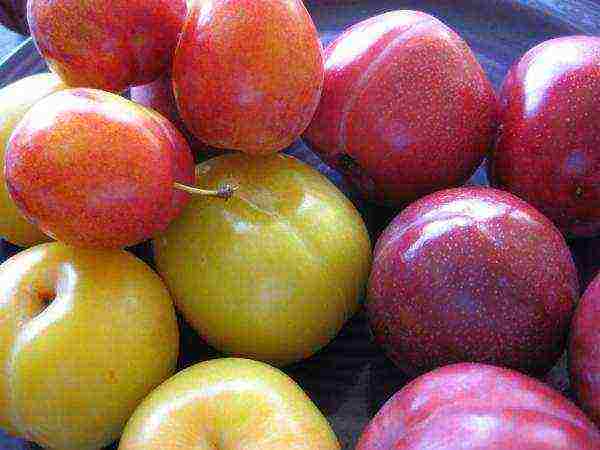
You may be interested in our publications:
- What is the difference between prunes and plums.
- The most common plum diseases and their treatment.
- When and how to properly collect plums from a tree?
Buying plum or cherry pluminitially evaluate their appearance. The fruit should not be wrinkled, crackled or rotten. It is normal to have a white coating on the surface.
Russian plum, aka cherry plum
Nutritional value and chemical composition
Cherry plum is usually called one of the original forms of home plum... Its fruits are loved by many for their unique sweet and sour taste and juiciness. They are used both fresh and in the preparation of desserts, preserves, sauces, jams.
Recently Russian scientists have identified the fruit as a separate botanical species - "Russian plum"... The calorie content of cherry plum averages 27 kcal per 100 grams of product.
Most of the varieties are self-fertile... In this regard, several varieties of cherry plum are planted on the garden plot at once, which are necessary for mutual pollination.
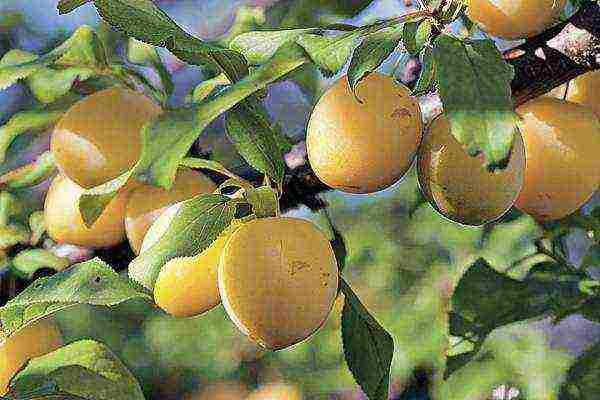
Ripe fruits contain:
- vitamins of group B, E, PP, C, provitamin A;
- iron, sodium, potassium, phosphorus, calcium;
- pectin substances;
- ascorbic acid.
Cherry plum is combined with various productssuch as meat, poultry, vegetables, cheese, cottage cheese. It can be frozen and dried.
Among the popular varieties of cherry plum it is customary to distinguish: Tent, Bounty, Granite, Kuban comet, Nesmeyana.
Useful properties and harm to the body
Cherry plum is not only a delicious fruit. It has many beneficial properties.
Cherry plum fruits are used for therapeutic and prophylactic purposes in prolonged constipation, vitamin deficiency, metabolic disorders.
Diet product used by people who want to lose weight. Regular use of ripe fruits is an effective measure for the prevention of cataracts.
Water tinctures of flowers have shown effectiveness in the treatment of kidney and liver diseases, disorders of the reproductive system in men.
The seed shells are used in the production of activated carbon.
Dried pulp retains taste, is included in the daily diet as an antiscorbutic agent.
The greatest benefit can be obtained eating fresh cherry plum... Ripe fruit has a characteristic aroma and a dense skin without damage. All useful properties are preserved in full after freezing.
Especially tasty cherry plum juicewhen it is blended with other berries and fruits. It is often used as a filler for yoghurt.
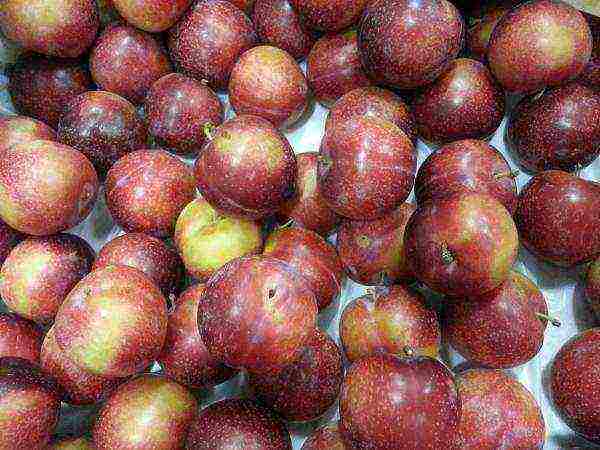
The fruit is recommended for children, pregnant women, elderly people, athletes. Perfectly quenches thirst and fills with vitality.
Cherry plum is recognized by official medicine as a useful fruit, but consumption should be monitored... Otherwise, there is a high probability of poisoning the body, the appearance of heartburn, nausea and gastrointestinal upset.
Up to 5 fruits can be eaten without harm to health.
Contraindications for cherry plum include children's age up to a year, individual intolerance, increased acidity of gastric juice. The fruit should also be abandoned for people with diseases accompanied by diarrhea.
The benefits and harms of plums, chemical composition
Many people like juicy plums, but the fruit is valuable not only for its taste. The composition of the fruit includes a large number of useful substances are vitamins C, A, B, PP, as well as potassium, phosphorus, iron and others.
Calorie content of plum the average is 42 kcal. Regardless of the variety, the fruit has a number of beneficial properties:
- reduction of puffiness;
- getting rid of constipation, atony;
- cleansing the intestines, the body from toxins;
- elimination of the accumulation of bile;
- strengthening the walls of blood vessels, muscles of the heart and nerve cells;
- normalization of the liver;
- stabilization of blood pressure levels;
- antipyretic effect for colds and infectious diseases, which are accompanied by an increase in human body temperature.
Along with the fruits fruit plum leaves are also useful... They contain coumarin, which prevents blood clots and thins the blood. Rinsing the mouth with a decoction of the leaves is used at the first symptoms of stomatitis.
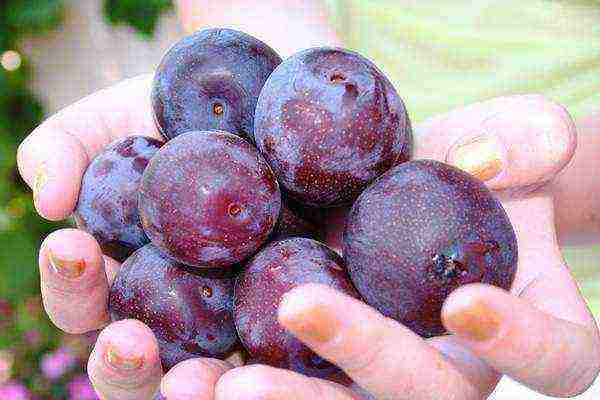
To avoid harm to the body, care should be taken when consuming plums.
To popular varieties of plums among gardeners include: Mirabelle, Honey White, Tula Black, Alyonushka.
Use in cosmetology
Rich vitamin composition of cherry plums and plums allows you to use fruits in cosmetology. Regular application of masks will slow down the aging process, moisturize the skin, and also tighten pores.
Cherry plum and plum seed extract widely used in perfumery, in the production of medical soap.
In practice, the following recipes of traditional medicine are used:
- A mask based on softened plums and sour cream. Moisturizes the skin and gives it a healthy look.
- Cherry plum seed oil is used in the fight against stretch marks in pregnant women.
- Nourishing cream with cherry plum, egg white and starch.
- A decoction of plum or cherry-plum fruits will allow your hair to return to its natural shine.
- Cherry plum juice with chamomile infusion and baby cream. Recommended by dermatologists for dry, flaky skin.
Plum face mask:
Possibility of transportation
Harvesting time depends on the timing of the ripening of the fruit in a particular variety. The most important thing is not to delay the collection. Overripe fruits will quickly begin to crumble on their own. In this case, they will be poorly stored.
Cherry plum is much easier to transport than plum... If it is supposed to move the fruit over a long distance, the collection of fruits is carried out 5-7 days before full ripening. Boxes with small openings are suitable for transportation.
If the gardener decided to grow plum or cherry plum on his site, you should carefully consider the choice of a particular variety. The final result depends on this.
Plum and cherry plum are two closest relativesthat belong to the same botanical genus, you can distinguish them.
